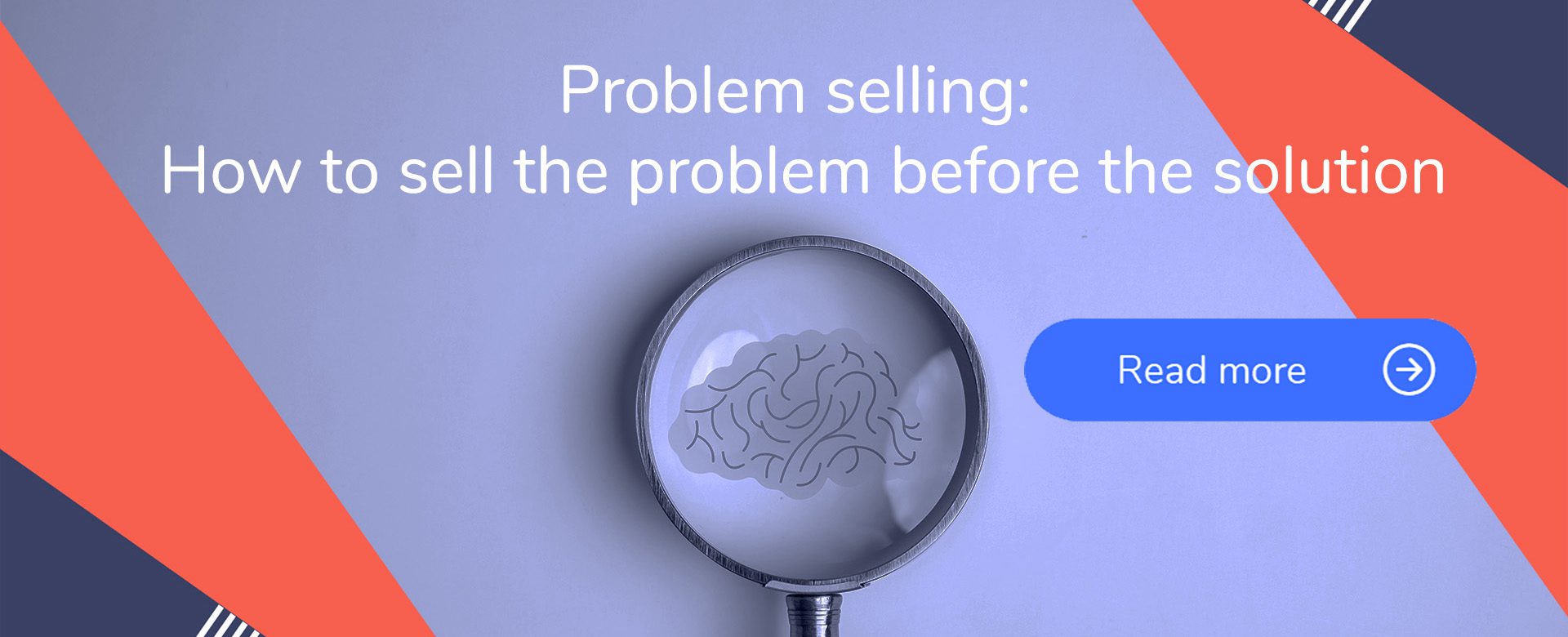How sales psychology helps you close more deals

The psychology behind selling, and how you can use it to close more deals, faster.
What’s the brain’s favourite channel? The Neural Network.
Your frontal lobe might’ve found that funny. But why are we talking about brains in an article about B2B sales? Well, sales (and marketing) is all about understanding human behaviour, and leveraging that to get people to buy.
While we’d like to think we’re all rugged individuals who are wise to modern sales tactics, science shows we think and respond to most situations in the same way. That’s why understanding people is the first step toward closing more deals.
How psychology is used in sales
Sales psychology looks at the behaviour of your target market in order to understand how to sell to them. Sound fanciful? It’s all rooted in science.
Using someone’s mindset to persuade them to do something might sound a bit unethical, but tapping into common thought processes can help you leverage a customer’s current need in order to provide better value for them, and close a deal for you.
Whether you’re dealing with a spontaneous splurge, or a measured customer using reason and logic, buying behaviours follow a similar pattern (Katelyn Bourgoin did a great Twitter thread on this). And that’s where understanding the principles of persuasion will help you win deals and influence people.
The principles of influence and persuasion
Back in the 1980s, American psychologist Dr. Cialdini undertook peer-reviewed research into the science behind persuasion. From this, he created seven principles of influence that are still used by successful sales and marketing professionals to this day.
Wielded correctly, these principles can turbo-charge your ability to change the outcome of a sales call, and close more deals, faster. Ready to exercise that grey matter? Let’s dive in.
Using sales psychology to close deals
Mind over matter. Here are the seven principles of influence and persuasion, and how you can use them to close more deals.
1. Reciprocity
“The practice of exchanging things with others for mutual benefit” – Oxford Languages
Picture this: you’re meeting a friend for lunch, when halfway through dessert they present you with a gift “just because”. Their sweet gesture has now made you feel indebted. Due to the mounting social pressure (perceived or otherwise), you offer to pay for lunch and feel relieved.
That’s the effect of reciprocity – the emotional impulse to give back after getting something.
Using reciprocity to close deals
Going above and beyond for a customer can make them feel more obligated to buy from you. Buyers remember those who were helpful, not pushy, and provided value along the buyer journey.
Free trials of your service or samples of your product can also be good incentives, along with aiding customer retention. Giving someone a little extra gift when they buy from you makes them happy, and they’ll feel more inclined to be loyal.
2. Commitment
Ah, the C word. Most of us like to think we’re good at sticking to our goals, despite most new year’s resolutions being abandoned by mid-January. But the desire to modify our lives for the better is a huge driving force behind many marketing strategies. Why? Because humans have a deep-rooted need to be seen as consistent. We want our words and actions to align, and avoid being known as the person to “start everything and finish nothing”.
Using commitment to close deals
How serious is your customer about solving their challenges? Drawing on the need for them to appear stable, decisive, and willing to make positive changes, is a great demonstration of the commitment principle in practice.
Does your offering require customers to make frequent purchases in order to stay ‘committed’? Then highlighting this in your pitches will go a long way to bagging repeat business.

3. Liking
I’m going to need some honesty here – how many of us have been swayed to buy something, simply because we felt good about the person who was selling it to us?
The liking principle is one of the simplest but most important to get right. And with relatability as the yardstick for likeability in modern life, demonstrating that you respect your audience and align with their values is crucial to closing more sales.
Using liking to close more deals
Politeness costs nothing and goes a long way. While giving your customer a genuine compliment might surprise them, brighten their day, and boost the likelihood of a transaction. Read into their personality, find common ground, and try mirroring certain characteristics of your customers to build trust.
Get the balance right between friendly and creepy and you’ll be closing deals before you can say “prefrontal cortex”.
4. Authority
Want people to part with their cash? Then customers need to trust you and believe you know what you’re talking about. By instinct, humans follow and pay attention to those who are deemed to be an authority.
A modern form of authority-based sales is influencer marketing. Influencers are highly valued by their audience, so any brands or products that they endorse are more likely to see sales as a result. A more traditional example of this would be the “4 in 5 dentists recommend this toothbrush brand” or celebrity endorsements on beauty products.
Using authority to close deals
If you don’t have the budget for the latest Grammy winner or Instagram sensation, having tangible examples such as a wealth of sales enablement content and a bank of customer case studies will go a long way to solidify your solution as a trusted choice. Being featured in the media and at industry events also demonstrates your authority in your particular field.
5. Unity
The goal of unity marketing efforts is to satisfy the urge for community. Humans have an innate desire for belonging, and to be part of a common purpose. Making potential customers feel like they’ll be a part of something bigger can be a great way of getting them to convert.
Using unity to close deals
Think about your offering, and what added value you can convey in your messaging that taps into the need for unity. Reviews and referrals also feed into this principle; customers who see positive feedback from similar businesses will soon see you’re a good fit for their needs.
6. Social
We’re social animals by nature, and have an intrinsic desire to share interests and look out for each other. You might’ve heard the term ‘social proof’ being banded around the marketing department. It’s not just a buzzword, but a crucial aspect of sealing the deal.
The B2B sales pipeline is longer than ever, with customers choosing to go on their own buyer journey and carry out research before even speaking to a sales rep. That’s where having happy customers rave about you will pay off.
Using social to close deals
Case studies and client testimonials are crucial to addressing the social principle of sales. Most buyers will head straight to customer reviews after reading about a product or service, and it’s become a solid stage of the buyer journey. Display case studies and reviews clearly on your website, address any negative reviews promptly, and point prospects towards success stories for similar businesses.
7. Scarcity
FOMO is real. People want what they can’t have, and the ‘fear of missing out’ is one of the most common sales tactics that sales reps choose to leverage. When the timer is set, the compulsion to choose gets greater – get a good deal now, or risk paying more later?
Using scarcity to close deals
Modern buyers are much wiser to sales tactics, but our primal thought processes still remain. Limited-time deals and seasonal offers are the simplest ways to leverage the scarcity mindset. Think extended warranties, discounted upgrades, or anything else relevant to your business.
Not all customers will respond to a “now or never” pitch – so an offer that provides genuine value, delivered without pressure, will see your close-rate boom.
No-brainer sales engagement
If you want more leads, then Sopro’s ready to blow your mind. We find your target audience from a live data set, and engage them with relevant, on-brand outreach emails on your behalf. You’ll then receive sales enquiries straight to your inbox, with our prospecting brainiacs on hand every step of the way. Book a demo.








Share